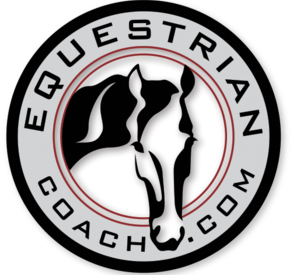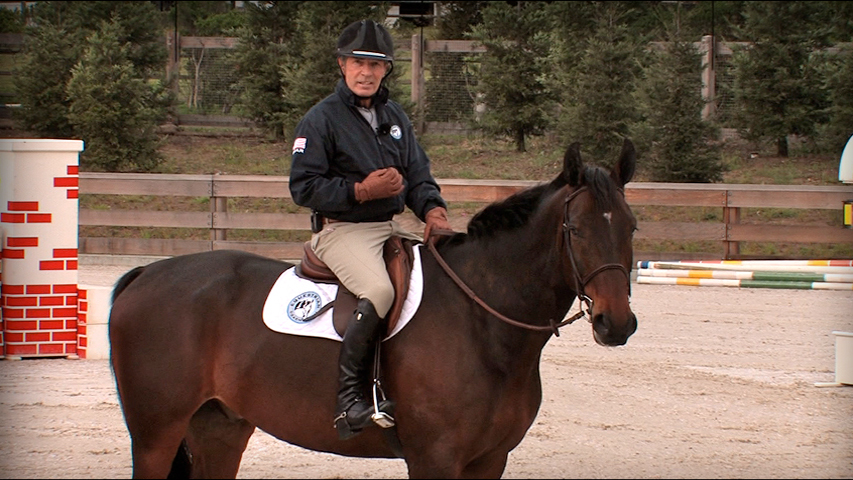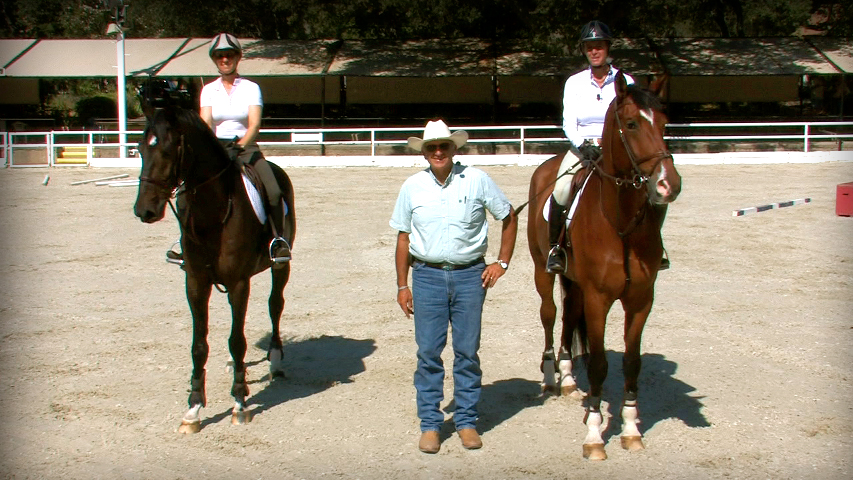Linda Allen
- 12 May, 2016
- 0 Comments
- 4 Mins Read
Raised Cavaletti Work: Insurance Liabilities When Riding Unsupervised by Your Trainer
Panel Experts: Linda Allen and Marnye Langer
Submitted by member: Natalie
I attended a clinic with Bernie last year, and he was emphasizing the benefits of practicing over low cavaletti. He said poles on the ground are okay, assuming your horse makes a decent effort over them, and doesn’t just straddle them as some do. In general, he recommended the slightly raised cavaletti, just a bit higher (8-12 inches), as it gives you a somewhat more real feeling of a small jump. Since there is little concussion on the horse over this height, I could practice every day.
My dilemma is the trainer I am with only lets us jump when supervised, and won’t let me practice on my own over cavaletti. They say the reason is due to their insurance policy. Do trainer equine insurance policies normally have a “supervised schooling only” requirement of all clients over jumps? Do they actually have specs on what height constitutes a jump? If so, what height would a raised cavaletti become a jump? Would 8-12 inches really be considered a jump?
No one seems to be able to answer this question, and I really would benefit from the practice cavaletti would offer.
Answer by Linda Allen
Actually, this is not the first time this question has been posed to me. Like Bernie, I’m a big believer of the benefits to be gained from working over these type of exercises for nearly every horse and rider. There are almost an infinite variety of ways to use them for improving both your and your horse’s balance, rhythm, awareness of stride and impulsion, and focus/concentration – all without the physical stresses that come with a lot of jumping. In fact, I believe that this sort of work is something that is hard to ‘overdo!’
That said, I understand your trainer’s rule about schooling without supervision. While I am sure companies offering insurance coverage for professional trainers are likely to vary in their actual wording, I would guess that few trainers are willing to open what might become a ‘can of worms’ that could result when students and horses under their care, custody, and control are permitted to set ‘obstacles’ (no matter how tiny) to work on their own. They might trust you to limit your work to the sort that Bernie introduced you to, but then find that others under their care took it beyond that and got themselves into trouble. With risk of injury, most responsible trainers take the ‘better safe than sorry route.’
Unless you have the ability to keep you horse at home, where you would have the freedom to do this work with raised poles, I’d suggest sitting down with your trainer and get her blessing to work over simple rails on the ground on your own. She might not worry about this getting out of control as there is no discussion about what constitutes a ‘raised pole’ versus a ‘jump.’
While not as effective at getting the horse’s attention as raised ones, ground poles still offer lots of benefits. Learn to feel and mitigate any small changes in your horse’s rhythm (as well as your own perfectly centered balance) as his stride adjusts as necessary to accommodate the rails. Both of you will benefit. If your horse starts out seemingly without much respect for them, persevere and he will discover that improving his attention and balance is far more rewarding than continuing to ‘stub his toes’ at those pesky poles!
Answer by Marnye Langer of LEGISequine.com
When a trainer or a facility owner applies for insurance that includes protection for liability related issues, one of the items the insurance carrier asks for is the rules the trainer or facility manager operates under. We commonly see rules such as keeping dogs on leashes (or no dogs allowed), no smoking, and safety headgear required while mounted. However, some trainers will have more detailed rules, including things like riding while supervised, jumping, and the like.
When a trainer or facility owner receives the liability policy, he is expected to follow the rules he stated in his application. Therefore, if your trainer has rule that clients cannot jump unsupervised, then your trainer would possibly be violating the terms of his insurance contract.
However, I suggest you find a time you and your trainer can quietly talk about your objectives and goals. Perhaps your trainer considers slightly raised cavaletti as jumps, but possibly your trainer may be willing to allow you to practice over poles on the ground. Your trainer will likely appreciate the fact that you understand his need to follow the rules he sets forth, and hopefully your trainer will carefully listen to your desires. In all likelihood the two of you can reach a satisfactory solution.
Video Recommendations:
Exercises to Develop a Better Eye: Part 1-A
Bernie Traurig
Bernie demonstrates exercises you can incorporate into your flatwork everyday that will work your eye without overworking your horse!
Running Time: 19 minutes and 1 seconds
A Basic Pole Exercise
Team McAllister
Join training duo, Jenni Martin McAllister & Steve McAllister, as they share some of their favorite exercises for green and seasoned horses alike. Practice these exercises at home and you’ll have a more rideable horse in the show ring.
Running Time: 7 minutes and 17 seconds
Have Something You Want to Ask Our Panel of Experts?
Ask The Experts is the ultimate way to get help from the top professionals in the equestrian industry without leaving the comfort of your home. This service is available to Monthly, Annual and Lifetime Members of EquestrianCoach.com.



